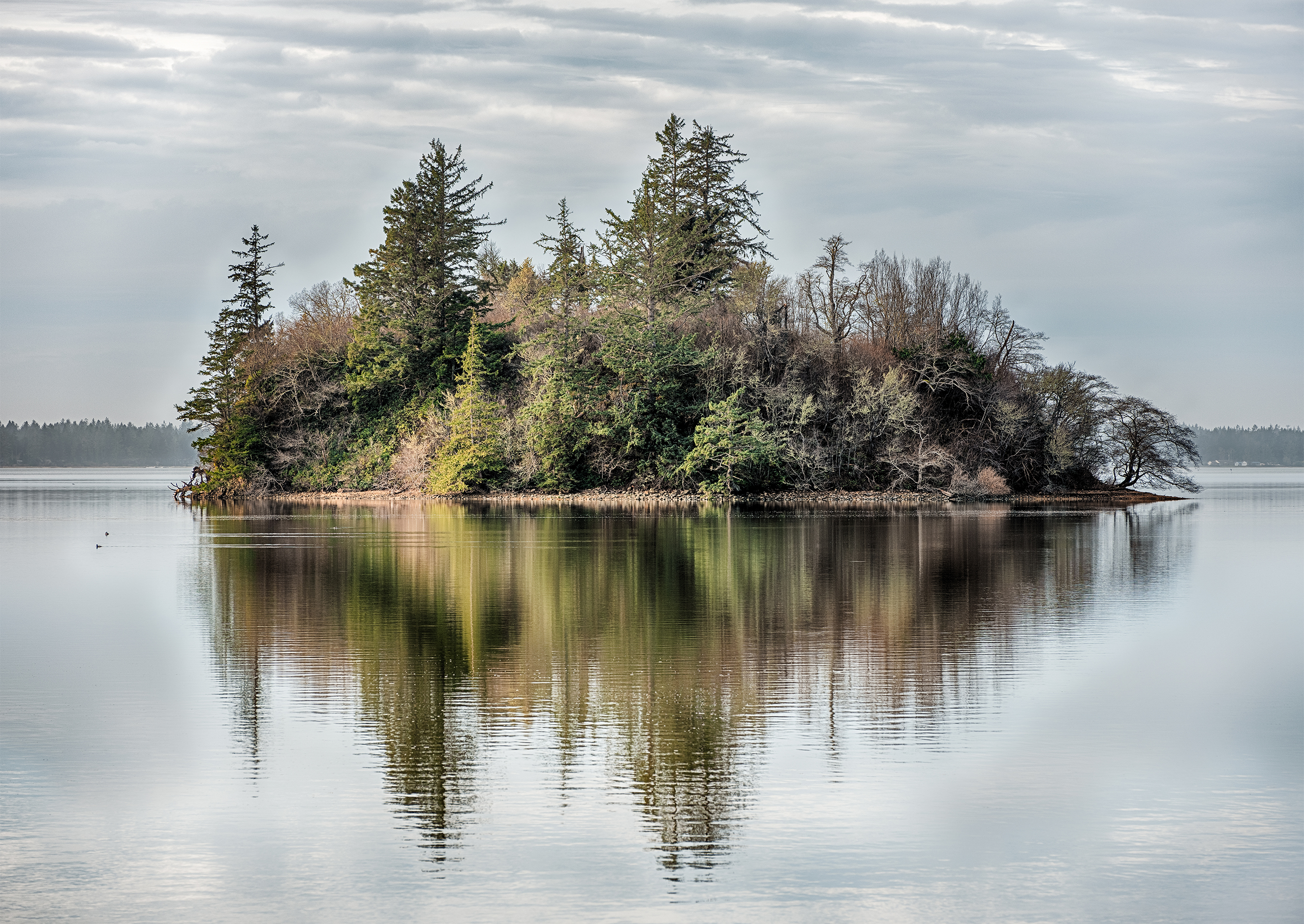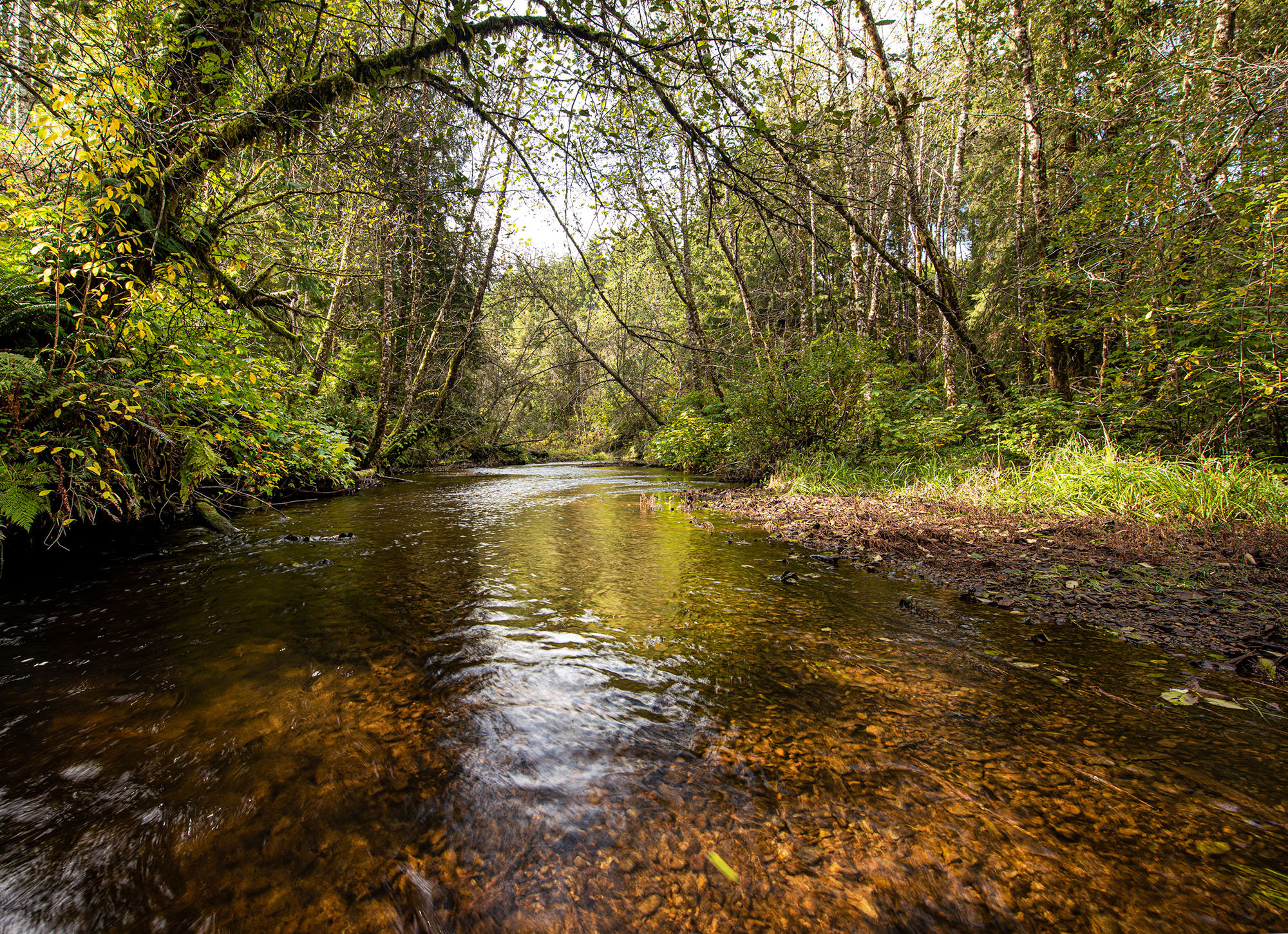On Washington’s beloved Willapa Bay, Western Rivers Conservancy has launched an effort to conserve a stretch of the Bear River by adding a critical property to the Willapa National Wildlife Refuge. This spring, we committed to purchase the Willapa Coastal Forest property, which WRC plans to acquire and ultimately convey to the U.S. Fish and Wildlife Service. This will position 2,394 acres of coastal forest and wetland habitat for extensive restoration and protection, while expanding recreational access at the southern edge of the refuge.
Willapa Bay, the second-largest estuary on the West Coast, is home to abundant salt marsh and tidal mudflats, coastal dunes and beaches, grasslands and stands of old-growth forest that play host to a diverse array of fish and wildlife. During peak spring migration, over 100,000 birds feed and rest at the wildlife refuge, while the bay itself provides vital habitat for salmonids year-round. The refuge also supports amphibians like Van Dyke’s salamander and northern red-legged frog, as well as large mammals like black bear and Roosevelt elk.
Created by President Franklin D. Roosevelt in 1937, Willapa NWR has long been a popular recreational destination, providing excellent boating, hiking, birdwatching, hunting and shellfish harvesting. The refuge is also one of few in the National Wildlife Refuge System that is open to camping.

WRC’s efforts on the Bear River will protect key stretches of several rivers and streams that form part of the life source of the bay. The property contains three miles of the Bear River, a small but important stream that helps form Willapa Bay, and over 30 miles of perennial and intermittent streams.
Despite heavy logging in its upper watershed, the Bear River continues to support spawning salmonids. WRC’s conservation of the property will benefit populations of chum, fall Chinook, coho, sea-run cutthroat trout, steelhead and Pacific lamprey that enter the Bear River each year. Our efforts will also permanently protect a mixed forest of western red cedar, Douglas fir and western hemlock on the slopes above the bay that provide habitat for Roosevelt elk and the elusive Columbian black-tailed deer—including stands of old growth that support endangered marbled murrelet. Until now, the property has been managed as industrial timberland. Our aim is to conserve this riverland forest and lay the groundwork for its recovery.
Now that we’ve signed an agreement to purchase the Willapa Coastal Forest property, the hard work of buying it, securing funding through the Land and Water Conservation Fund and then transferring the property to the U.S. Fish and Wildlife Service all begins. But with this critical first step taken, this key piece of Willapa Bay is on its way to becoming part of a wildlife refuge that Washingtonians love and that sustains a vast array of fish and wildlife on this verdant stretch of the Pacific Coast.



